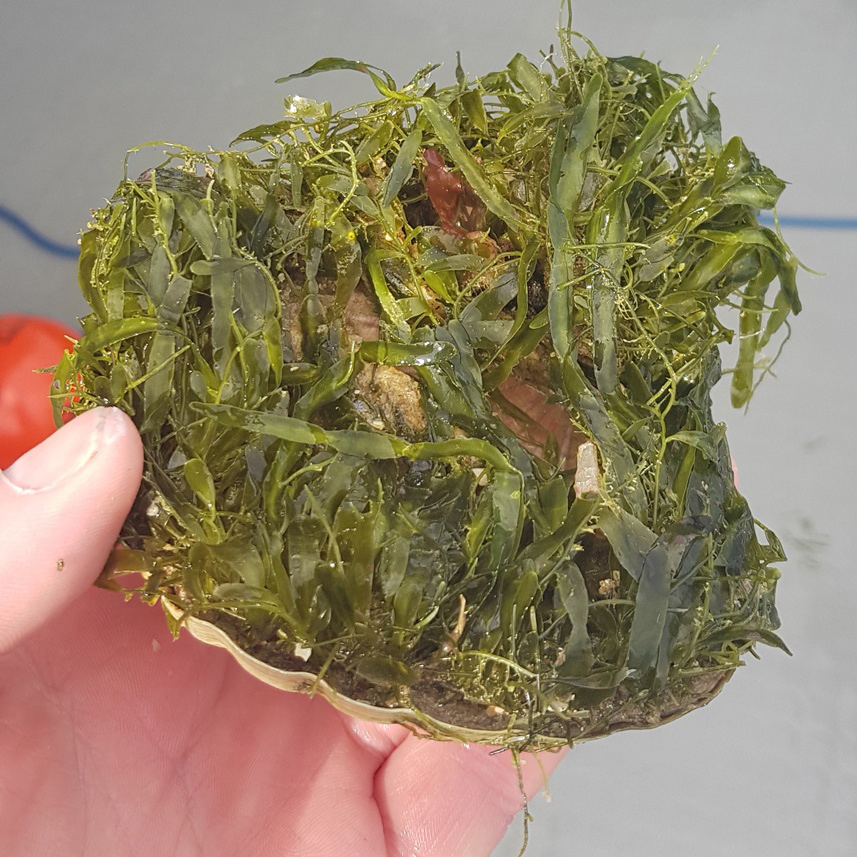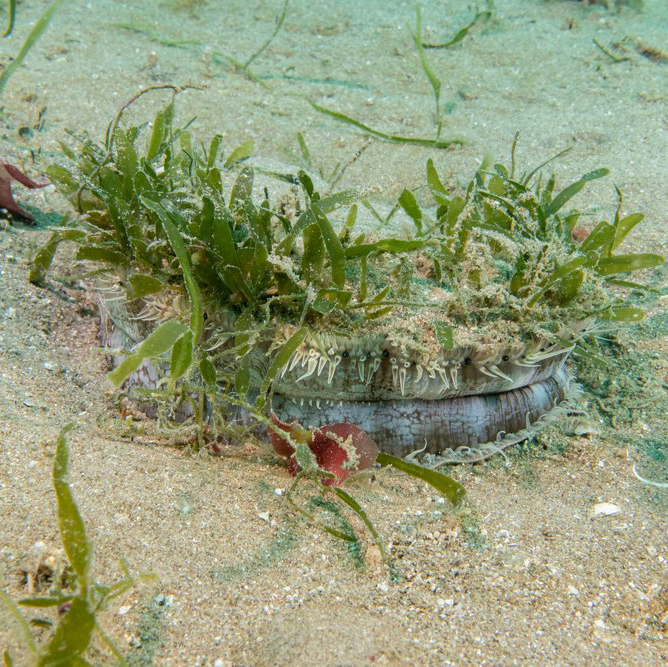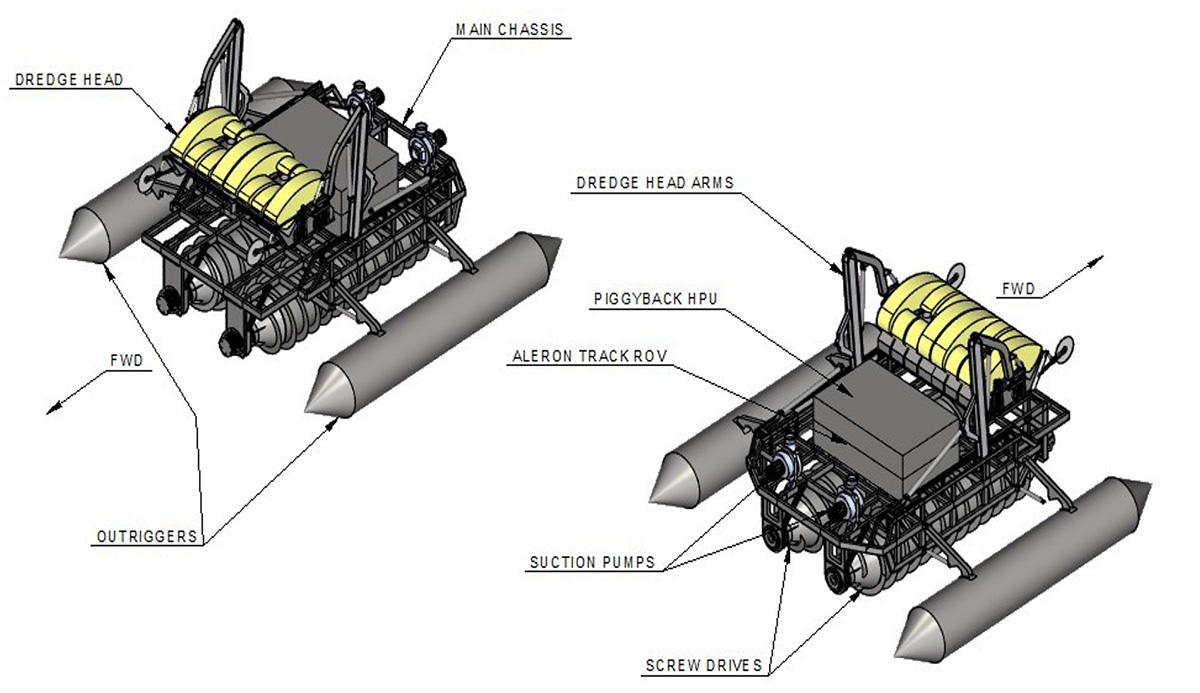Exotic Caulerpa
The invasive seaweed exotic Caulerpa is in Te Rāwhiti Inlet, Bay of Islands
A Controlled Area Notice (CAN) and rāhui are in place to prevent the spread of exotic Caulerpa. There are two zones within the CAN – the Te Rāwhiti Inlet high-risk zone (red zone) and the Yellow ‘check and clean’ zone.
Seen it elsewhere? Report it
If you think you’ve found exotic Caulerpa outside of the CAN area, take a photo and record the location. Then report it to MPI:
- Freephone: 0800 80 99 66
- Online form: report.mpi.govt.nz
Red high-risk zone
This zone covers Te Rāwhiti Inlet and Omakiwi Cove. (See the map below).
In this zone:
- no fishing of any kind or diving is allowed.
- anchoring is illegal without a permit issued by Biosecurity New Zealand. A permit is not required in the event of an emergency where there is no other safe sheltering or mooring location.
To apply for an anchoring exemption permit (for all areas of the red zone), download and complete the application form and email it to caulerpa@mpi.govt.nz
Coordinates for the red zone are:
- Point A 35°14.728′S, 174°11.884′E
- Point B 35°13.649′S, 174°13.202′E
- Point C 35°13.829′S, 174°13.694′E
- Point D 35°13.715′S, 174°14.553′E
- Point E 35°14.080′S, 174°14.784′E
Yellow ‘check and clean’ zone
You can anchor in this zone, but before moving location (either within the yellow zone or out of the zone) you must Bag it, Bin it – which means:
- check the anchor and chain for any attached seaweed
- remove any seaweed and store it securely in a bag or container so it cannot get back into the sea. When you get back to land, put it in the bin
- clean any equipment thoroughly before using it in another area.
In the yellow zone, no fishing is allowed that can disturb the sea floor. Dredging, bottom trawling and flounder netting are prohibited.
In this zone you can:
- line fish using a rod or handline from the shore, jetty or an anchored vessel
- drift fish from a vessel
- cray or crab-pot
- spear fish and hand gather
- shore-based longline (e.g. with a kontiki or drone)
- dive.
Coordinates for the yellow zone are:
- Point F: 35°14.476′S and 174°07.192′E
- Point G: 35°11.520′S and 174°12.380′E
- Point H: 35°13.036′S and 174°15.865′E
- Proceed west along the high-water mark back to Point F: 35°14.476′S and174°07.192′E

Map of the high risk zone (coloured red) in Te Rāwhiti inlet, and controlled areas (coloured yellow) in the Bay of Islands (Image: mpi.govt.nz).
Exotic Caulerpa has bright green vertical fronds that are shaped like oar blades. These fronds grow up to 10cm long and rise from horizontal runners or roots known as stolons.

Caulerpa on a scallop. (Photo credit: NIWA).
It can be found growing below the tideline (from between 2 to 30 metres deep) on both hard surfaces and sandy areas.

Caulerpa. (Photo credit: NIWA).
Exotic Caulerpa can spread rapidly, forming vast, dense underwater fields. It competes with other species, including our own native caulerpa species, for space and upsets the balance of local ecosystems. This presents a risk to recreational, cultural, and commercial marine activities.
One of the main ways this pest spreads is by breaking into fragments which can attach to marine equipment.
Fragments can get tangled in or stuck on equipment such as anchors, chains, nets, dive and fishing gear, and crayfish pots.
It can survive out of water for up to a week or more if it is in a moist location (like an anchor locker or a bunched-up fishing net).
Northland Regional Council, Biosecurity New Zealand, Ngāti Kuta, Patukeha, and other partners are working together to control exotic Caulerpa where possible.
Tool development
As part of central government’s research and development programme to identify effective methods for controlling exotic Caulerpa, a mechanical suction dredge planer (SDP) was developed locally to remove large quantities of the invasive seaweed.
This world-first large-scale suction dredge technology system, developed by Johnson Bros Ltd, essentially vacuums the seaweed from the sea floor, using a digger on a barge sporting a custom-built dredge head.
Two phases of mechanical suction dredging have been completed in Omakiwi Cove, treating 22,295 m² of seafloor.

A diagram of the mechanical suction dredging system.
In early 2025, MPI awarded NRC $6.2 million in funding to progress the mechanical suction dredging technique. Council, Johnson Bros Ltd, Seaworks, NIWA, MPI, Cawthron, and local hapū worked together to develop a remotely controlled submersible dredge planer to replace the excavator-mounted dredge head. The upgrade is expected to be ready by early 2026 and aims to deliver significant improvements in speed, coverage, and overall effectiveness in removing exotic Caulerpa, especially in deeper or rougher waters.

A mock-up of the proposed SDP and dredge head.
Monitoring and public education
NRC dive teams and contractors have surveyed over 100km of seafloor, focusing on areas with high-use anchorages and public reports. In May 2025, NRC and NIWA deployed a remotely operated vehicle with AI-enabled detection across seven high-risk areas. This technology helps detect exotic Caulerpa in real time and supports future response planning.
NRC and MPI are working with ambassadors to conduct on-water and land-based engagement to raise awareness of the CAN rules and rāhui, the ecological impacts of exotic Caulerpa, and how people can help stop it from spreading. Efforts include engagement at boat-ramps, schools, large events, and via on-water surveys.
Boaties, fishers and divers have a role to play to stop the spread of this pest.
Keep your boat and gear clean:
- When at sea, before moving to a new location, check you anchor and anchor chain, as well as any other gear (e.g. fishing line, dive equipment).
- If you find seaweed attached, remove it and bag or contain it securely so it can’t get back into the water. Take it ashore for disposal in a rubbish bin.
- If you can’t contain it securely while at sea, put it back into the waters it came from.
- If you find you’ve picked up seaweed when you’re back at shore, remove it and put it in the rubbish.
